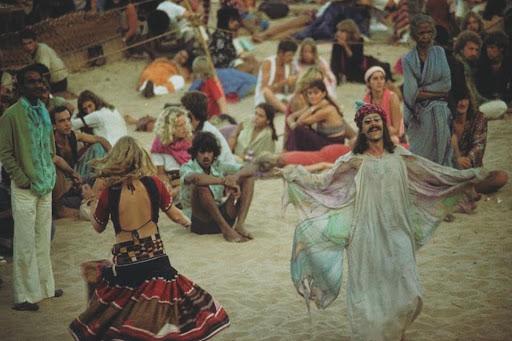
Goa, a small state on India’s west coast, is now famous for its beaches and laid-back vibe. However, between the late 1960s and the mid-1980s, it attracted a different kind of traveler—the hippies. Drawn by the allure of freedom and self-expression, these travelers found solace in Goa’s secluded beaches and welcoming local community, creating a unique cultural movement that defined an era.
The Rise of Hippie Culture in Goa
Growing up in Goa during this time, the author witnessed the peak of the hippie movement. These travelers, mainly from the West, came to escape the pressures of their home countries and embrace an alternative lifestyle. Goa’s isolated beaches—like Calangute, Baga, Anjuna, and Arpora—offered the perfect escape, with affordable accommodations and friendly locals. Many Goans rented rooms in their homes to these visitors and provided home-cooked meals, fostering a strong bond between the locals and the newcomers.
Life Without Digital Interference
In those days, there were no mobile phones, digital cameras, or social media. This lack of technology allowed the hippies to live freely without constant scrutiny. They stayed as long as their funds lasted and sold their belongings in flea markets to earn money for their next journey. The author’s curiosity about the hippie lifestyle began with a visit to the now-famous Wednesday Flea Market, where these travelers sold their possessions.
Flea Markets and Full-Moon Parties
Flea markets became an essential part of the hippie culture, allowing them to sustain their lifestyle. These weekly events were also a chance for locals to buy interesting items at low prices. Another key feature of this era was the legendary full-moon parties—beach gatherings with live music, bonfires, and dancing under the stars. Hippies and locals celebrated together, creating a vibrant and accepting atmosphere.
Embracing Freedom
For the hippies, Goa was about living simply and embracing freedom. At one point, this freedom extended to a nudist beach, which eventually faced resistance from conservative tourists and local authorities. Despite such challenges, the hippies continued to enjoy a lifestyle of self-expression and acceptance.
The Decline of the Hippie Era
By the early 1980s, Goa’s tourism industry began to grow, with large hotels and increasing prices making the area less affordable for the hippies. Slowly, they began to leave, marking the end of the golden age. While flea markets still exist today, they lack the original charm and authenticity.
A Lasting Legacy
The hippies left behind a lasting influence on Goa’s culture, shaping it into the open-minded and inclusive destination it is today. For those who grew up during this period, the era of the hippies was a unique time of freedom, creativity, and connection with nature.
Conclusion
The hippie culture in Goa during the 1970s and early 1980s was a period of exploration and self-discovery. Though the era has passed, its values of openness and creativity continue to shape Goa’s identity and leave a lasting impact on its beaches, markets, and people. For those who remember, and for those who are curious, the stories of this time serve as a reminder of a journey through freedom and expression.

